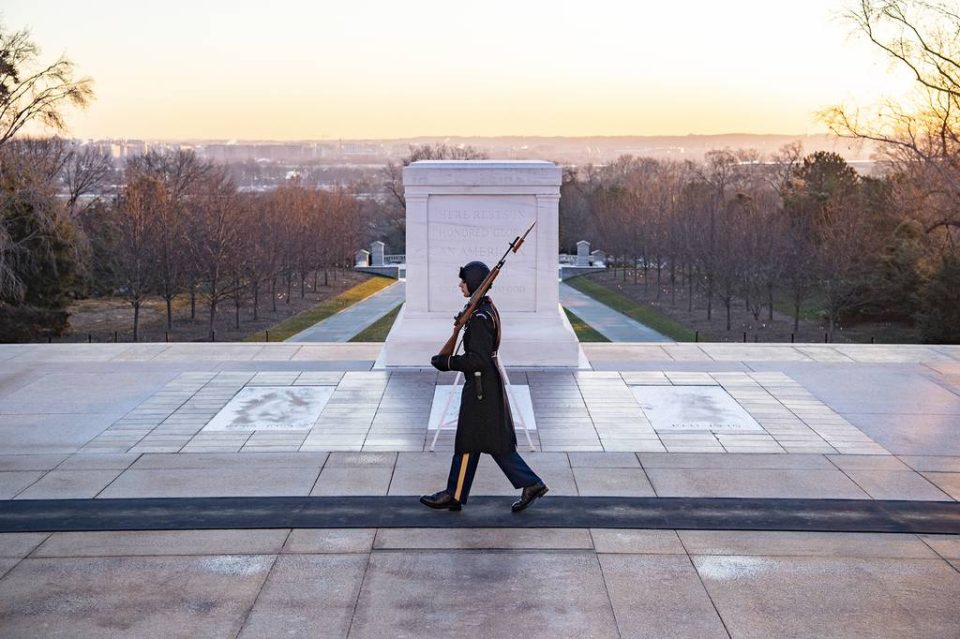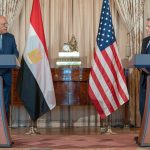- The first American Unknown Soldier was laid to rest in the Tomb of the Unknown Soldier Nov. 11, 1921, as President Warren Harding laid a Medal of Honor across the casket.
The Society of the Honor Guard, Tomb of the Unknown Soldier, a non-profit association committed to the preservation of the history of the Tomb, will be hosting a month’s worth of celebrations across the country to mark the Centennial anniversary of the Tomb.
The organization is made up of past and present Tomb Guards, as well other individuals — like spouses and dependents of Tomb Guards and other military personnel with honorable discharges. The society also works to honor the sacrifice of the unknown servicemembers buried on the east plaza of the Memorial Amphitheater, as well as the empty crypt dedicated to those missing-in-action.
“We view the Centennial not only as a celebration to remember the burial of the World War I Unknown Soldier, but an opportunity to reflect on what the Tomb of the Unknown Soldier means to America,” the organization’s website reads.
It serves as “a focal point to bring all Americans together — that its meaning be not limited to the Great War and the exclusive claim of that War’s veterans.”
Nov. 9 and 10, the latter of which also marks the 246th birthday of the United States Marine Corps, will be the first time in 78 years that Tomb Guards will allow visitors to enter the chains surrounding the Tomb. The public is invited to lay individual flowers at the Tomb.
There will be 16 different ‘Never Forget’ gardens being dedicated between Nov. 9 through Nov. 20, from one at the United States Military Academy in New York all the way to the Southern Oregon Rehabilitation Center in White City, Oregon.
Other notable centennial events include a series of lectures regarding the history of the Tomb of the Unknown Soldier in at the Crystal Gateway Marriot in Arlington, VA, as well as a bell-ringing aboard the USS Olympia in Philadelphia at the Independence Seaport Museum. The bell will be rung at 4 p.m., exactly the same time the Unknown Soldier departed the ship 100 years ago at the Navy Yard in Washington, D.C.
With more than 100,000 U.S. casualties during World War 1, repatriation efforts for the fallen were much more difficult than during the Spanish American War, when the policy of repatriation took effect. France and Great Britain — who suffered significantly higher casualty rates — barred repatriation, but to ease the grief of their citizens, each country buried one unknown soldier on Armistice Day in 1920.
Great Britain’s Unknown Warrior was buried inside Westminster Abbey in London while France’s Unknown Soldier was laid to rest at the base of the Arc de Triomphe in Paris.
While American families could request to have their servicemembers repatriated or buried in one of the American cemeteries abroad, New York Congressman and WW1 veteran Hamilton Fish proposed legislation that matched the French and English’s decision, allowing for the interment of one unknown American soldier at a special tomb in Arlington National Cemetery.
The purpose of the legislation was “to bring home the body of an unknown American warrior who in himself represents no section, creed, or race in the late war and who typifies, moreover, the soul of America and the supreme sacrifice of her heroic dead.”
The first American unknown soldier was laid to rest in the Tomb of the Unknown Soldier Nov. 11, 1921, as President Warren Harding laid a Medal of Honor across the casket.
The above story was first published in U.S. Military Times, https://www.militarytimes.com/military-honor/salute-veterans/2021/11/08/nationwide-celebrations-mark-100-years-of-remembrance-of-the-tomb-of-the-unknown-soldier/





